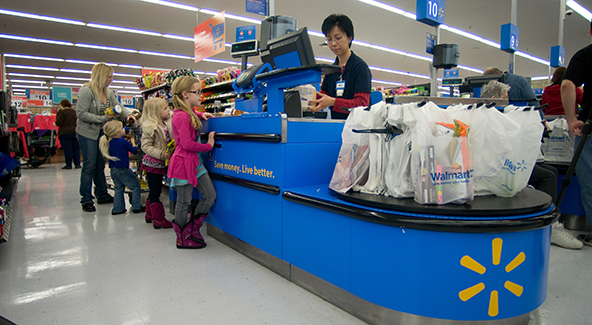Do You Need a Second High-Risk Merchant Account?

Over the past couple of weeks I’ve been warning against getting overly aggressive when looking for a high-risk merchant account — in our relatively small world, contacting multiple payment processors and initiating an application process with each one of them would cause your paperwork to eventually reach the same underwriters and acquirers multiple times and to come to them from different directions. That never works in your favor for reasons that are easy to understand. One possibility is that such behavior indicates desperation, which in turn raises suspicions: this merchant’s paperwork is all over the place, so he must be having trouble getting approved — what is the issue? Alternatively, a reasonable acquirer may conclude that a merchant which is shopping around so actively would be willing to switch to a different service provider just as soon as someone offers him a processing rate lower by a quarter of a percentage point — why bother with such a merchant? So it is a good idea to be cautious when getting that first merchant account and go through one application at a time.
But what if you’ve already secured that all-important first merchant account? Should you be now just going about your business or should you be looking for a second one as an insurance policy? Well, the answer is “it depends” and I’ll explain in a second. But before I do that, I should note that, whatever you decide to do, your first priority should always be to keep your existing merchant accounts in good standing with your processor — it is much easier to hold on to an account that you already have than it is to get a new one, especially if a previous one has been terminated. Now let’s examine the merits of having a second one.
Getting Insured
There is a single overarching reason for a merchant to be looking for more than one merchant account — insurance against a potential termination of one of his active accounts. This is not typically a big issue in the low-risk world, simply because terminations there are rare, but in the high-risk realm a merchant account closure is something that is always in the back of your mind. Moreover, a high-risk merchant account usually takes weeks to be approved and set-up, compared to a time-frame of a few days for the low-risk variety. So if, say, an online pharmacy’s merchant account is shut down today, it may take a month or more for it to secure a replacement, if it can find one in the first place. In the interim, the business is unable to accept its customers’ payments.
Moreover, getting approved for a merchant account is much more easily done while your business is accepting credit cards than it is right after your latest processor has pulled the plug. As is so often the case, in our industry service is more readily available to clients who don’t need it, whereas those who do are often out of luck. In any case, it does sound as if having insurance in the form of a second account is a sound strategy. Yet, using multiple merchant accounts is not for everyone.
Should You Be Getting a Second Merchant Account?
The thing is that each merchant account comes with its set of terms and conditions and the processing volume is among the most important ones. As I’ve previously noted, high-risk processors would not even look at a merchant whose volume is below a certain threshold — in the case of UniBul, we require that international merchants have at least $100,000-worth of monthly processing volume, before we take a look at their paperwork. Furthermore, the terms of service — discount rate, payout schedule, reserve amount, etc. — reflect the size of that volume: the higher the volume, the more favorable the terms. You probably see what I’m getting at. What happens when you split your volume between two (or more) merchant accounts? Well, the outcome largely depends on your foresight when setting up these accounts.
Typically, when filling out the paperwork of a new merchant account, applicants state their full processing volume, which makes perfect sense, as it helps them get the best terms available. However, later on, having finalized that first account, the merchant initiates a second application where he would typically state the same amount he entered in the first one, even if he does not intend to give that second processor his entire business — after all, he wants to keep the first one active; if nothing else, as insurance. And therein lies the problem — if you get an approval, you get it in no small part based on the processing volume stated in your paperwork and if you can’t deliver on that volume, you risk having your account shut down altogether. Yes, that is exactly what is at stake. Processors would rarely be willing to renegotiate the terms to reflect the lower actual volume — after all you’ve already given them inaccurate information, so why should they trust you now?
What our hypothetical merchant should have done instead was to enter in each application form only the amount he intended to process with each service provider. Yes, he would have got worse terms, but he would not have risked compromising the good standing of his accounts. The issue, of course, is that not everyone has that option available. For example, if a Canadian merchant contacted us and told us that his monthly volumes were, say, $150,000, we would have been happy to examine his paperwork and work with him, if everything checked out fine. However, if that same merchant stated a monthly volume of $50,000, because he had already committed $100,000 to another processor, we wouldn’t initiate the application process. Of course, other processors might well be willing to work with him, but if the business is of the high-risk types we specialize in, that is unlikely.
The Takeaway
So you can see why having a fall-back high-risk merchant account is not for everyone. Yes, high-volume businesses should absolutely set-up multiple accounts, so as to spread the risk. Smaller merchants, on the other hand, may be better off focusing their attention on growing their business and maintaining a good relationship with the processor they have. Setting up a second solution will only make sense once they’ve built up their volume to a sufficiently high level.
Image credit: Jaguarlandroveraustin.com.


